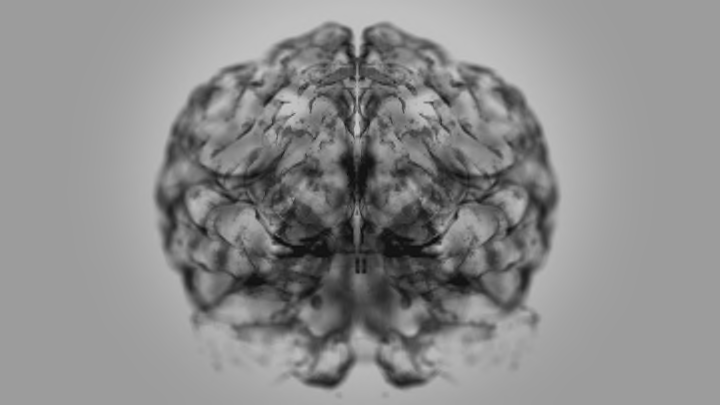Could Brain Imaging Reveal Your Mental State During a Crime?

Imagine that you are asked by someone at the airport to carry a suitcase for them. Somehow, against your better judgment, you agree. Later at the security checkpoint you are searched, and the suitcase contains illegal material. The punishment you’ll receive will depend on your mental state when you agreed to carry the baggage: Did you know that it certainly contained contraband, or were you merely aware of the risk that it might?
Judges and juries often have to gauge a defendant’s state of mind at the time he or she committed a crime. They have to decide whether a defendant committed a crime "knowingly" or "recklessly." In some cases, the difference could be a matter of life or death.
Now a new study, published this week in the Proceedings of the National Academy of Sciences, has turned to the brain to find a basis for this distinction. The researchers were able to find distinct brain activity patterns that revealed whether participants knew they were committing a (virtual) crime or were recklessly taking a risk.
“All the elements of the crime being the same, depending on which mental state the court decides that you were in when you committed the crime, you can get probation or 20 years in jail,” says the study co-author Read Montague, a neuroscientist at the Virginia Tech Carilion Research Institute. “I can't think of anything more important than loss of your liberty, so understanding these distinctions or the subtleties in them is important.”
For this study, 40 participants played a game inside a brain scanner. They had to decide to carry a suitcase that could contain sensitive documents through a maze where they could encounter one or more guards. The number of suitcases and the guards were altered in each round of the game to play with the level of risk the participants had to take.
The researchers used a machine-learning method of data analysis that looks at activity across the entire brain to find patterns. This revealed two activity patterns that corresponded to the conditions in which participants knowingly decided to carry a suitcase containing contraband, or the conditions where the participants made an uncertain but risky choice.
The distinct brain patterns they found suggest that these two legally defined mental states—knowing and reckless—are not arbitrary, but indeed map to different psychological states.
Montague is quick to point out that this study is not something you could use to avoid harsher punishment.
“It has no implications within a courtroom, and probably won't for quite a while,” Montague tells mental_floss. “This is a proof-of-principle study that informs the idea of mental-state distinctions.”
In fact, what neuroscience in general could potentially offer in a courtroom is heavily debated.
Our relatively recent ability to scan the brain and look for otherwise undetectable injuries has raised the idea that neuroscience could be used to inform the circumstances of a criminal case. If you have a brain lesion, after all, your behavior could be profoundly affected.
A number of real life cases have highlighted this idea: Take Charles Whitman, for instance, who experienced a sudden change of personality and ultimately opened fire at the University of Texas in 1966, killing 14 people. An autopsy on Whitman revealed a tumor in his brain pressing against his amygdala, the brain area involved in regulating emotions. In another case, a 40-year-old man suddenly developed a strong interest in child pornography and eventually got charged for child molestation. He was later found to have a growing brain tumor. He underwent a surgery to remove the tumor, and his sexual interests returned to normal. Months later, the urges were back—and so was the tumor, the doctors found. After the tumor was removed, the man’s urges once again subsided.
Even in these extreme cases that involve visible tumors, however, establishing a cause and effect between brain injury and criminal behavior is tricky. It’s all the more difficult when dealing with subtler brain differences.
Nevertheless, the use of brain evidence to argue for a milder sentence is growing. In high-profile cases, such as death penalty trials, brain evidence has been used to argue that defendant is not fully mentally competent and therefore should be spared the death penalty. In the case of Brian Dugan, for example, lawyers used brain results to argue that Dugan was a psychopath and could not stop himself from committing murder. The jury considered the evidence but decided for the death penalty anyway.
In response to the growing use of neuroscientific evidence in the court, a number of researchers have also warned about the limitations of neuroscience.
As Judith Edersheim, an assistant professor of psychiatry at Harvard Medical School and co-founder of the Center for Law, Brain, and Behavior at Massachusetts General Hospital recently explained at Undark, most neuroscience findings (such as a brain signature of psychopathy) are based on research on a group of people, and don’t necessarily translate to an individual. “Using group data to predict individual behavior is a very complicated leap,” she said.
Still, neuroscience could find legally relevant insights about the human mind—for example, about the way eyewitness memory works (not very well) or the way we make decisions (not always rationally).
Next, Montague and his team are planning to study whether people make different decisions based on what’s in the suitcase. Would their choices change, he asks, if instead of top-secret documents the suitcases contain an illegal substance like cocaine?